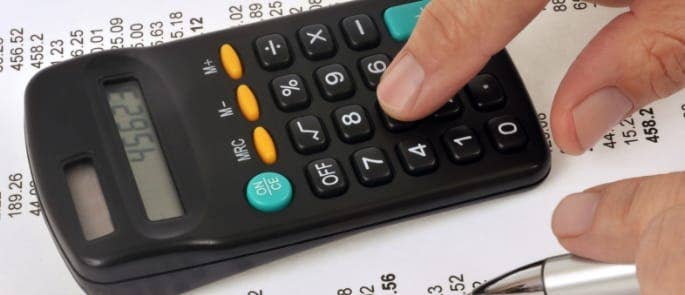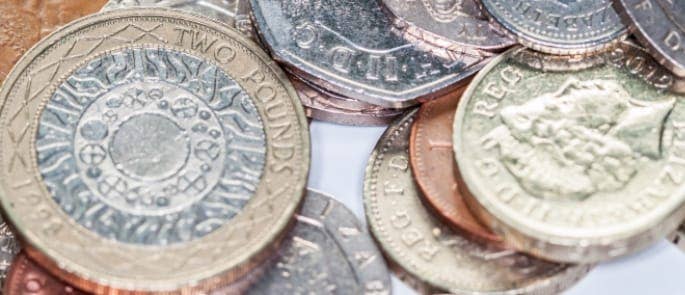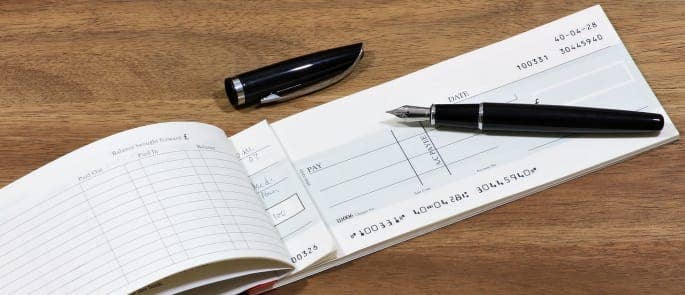Bookkeeping and Accounting Glossary A-Z
Are you keeping detailed records of your business’ financial transactions? Bookkeeping is as essential for a functional business as the inner cogs are for a clock.
If you’re starting out as a bookkeeper, getting to grips with all the UK bookkeeping terminology might feel a little overwhelming. Rest assured, no one will have glanced at a list of terminology and suddenly gained encyclopaedic knowledge of it.
How to Use this Glossary
Our bookkeeping glossary covers some of the basics that you’ll encounter during bookkeeping activities. Although it is not comprehensive, it’s designed to be accessible to anyone and help start building up your knowledge.

Terms and phrases are listed alphabetically so you can navigate the glossary easier and find a specific word you’re looking for. Bold italic indicates that there is a definition for a term elsewhere in the glossary in case you need further clarification.
You can refer back to this guide as often as you need.
A | B | C | D | E | F | G | H | I | J | K | L | M | N | O | P | Q | R | S | T | U | V | W | X | Y | Z
A
Account: The location where financial entries are recorded. Different accounts exist for different financial transactions, e.g. for sales and profit, and loss.
Accountant: The individual responsible for organising financial data and dealing with financial statements, as well as tax calculations. Can also be referred to as bookkeeper.
Accounting: The act of entering and sorting financial data into the bookkeeping system used by the company or accountant.
Accounting period: The time during which the business’ financial information is being tracked, usually done on a monthly basis.
Accounts payable: (‘AP’ for short) Money owed by the business to another business that has provided goods or services, e.g. vendors, contractors, and consultants – this is filed under accounts payable.

Accounts receivable: (‘AR’ for short) Money owed to your business by a customer for products and services, typically provided on credit – this is filed under accounts receivable.
Accrual: An expense due but not yet recorded in books, e.g. wages being paid in arrears.
Aggregate: The total sum of everything added together or compiled into a single place.
Appreciation: When an asset’s value increases over time.
Arrears: Money that is overdue and unpaid.
Assets: All items owned by the company which helps them run, e.g. money, equipment, land, buildings, vehicles, etc.
B
Bad debts: Overdue payments that are unlikely to be received, even after an effort is made to retrieve the funds. It is written off as a loss in accounts.
Balance sheet: This is a report that summarises the business’ financial situation; it details the assets, liabilities, and capital of the business. It also shows the balance of income and expenditure as of the date specified. Balance sheets help highlight what the business owns and owes.
Bank reconciliation: This refers to comparing the business’ bank balance with a bank statement to spot differences.

Billing: Sending invoices to customers who have purchased goods or services from your business.
Budget: The financial plan that estimates what the business will earn in the coming year. It details what the estimated earnings will be spent on.
C
Capital: Money belonging to the business owner.
Cash book: The book in which all cash flow is recorded, including the following information: date, amount, description of transaction, bookkeeping account, and reference.
Cash flow: The total amount of money going in and out of the business.
Cash flow forecast: This refers to planning the business’ future cash requirements. It involves predicting how much money will come in and out of the business at any given point.
Chart of accounts: A list of all the accounts used in the general ledger of an organisation; it’s used to categorise financial transactions. The categories are: Assets, Liabilities, Equity, Income, Cost of Goods Sold, and Expenses.
Closing balance: The positive or negative amount that remains in an account at the end of the accounting period, e.g. a month or year.

Contra: When an entry into or withdrawal from a bookkeeping account is made to cancel out an earlier one, e.g. paying £200 into an account in error then withdrawing £200 to cancel it.
Conversion balances: This refers to transferring bookkeeping records between accounting software programs. It involves taking closing balances from the previous software and entering it into the new software as opening balances.
Credit check: Examining a person’s credit history: their track record of paying back debts.
Creditors: These are the persons or businesses to whom your business owes money.
Credit notes: Issued to reimburse the buyer either partially or fully if a mistake has been made on an invoice, or if goods need to be returned.
Credit policy: The terms and conditions for providing goods on credit, qualification criteria, the collection procedures, and steps to be taken if customers do not repay the amount owed.
D
Debtors: The persons or businesses who owe money to your business.
Deductible: Purchases that are claimed as business expenses are described as deductible; they reduce business profits but reduce the amount of income tax owed.
Deposit slip: A slip of paper that accompanies cash or cheque payment. It details the amount of the deposit, the bank account the funds should be paid into, and the date of deposit.

Depreciation: The reduction in value of an asset overtime.
Depreciation accounting: The process of recording how much an asset will depreciate in terms of monetary value over its estimated lifetime before it’s essentially written off.
Drawings: Money withdrawn from the business account for personal use.
E
Equity: The amount the business owner has contributed to the business from their personal funds (capital) and how much has been withdrawn for personal use (drawings).
Expenses: Costs that are incurred for the purpose of keeping the business running, excluding fixed assets.
F
Factoring: This means receiving funds instantly without having to wait for payment from a customer. A factoring company pays a percentage of the invoice to the business being paid, as much as 95%, and takes a cut of the cost.
Financial statements: Reports made by a tax accountant at the end of the financial year, which indicate how well the business is doing and its value. They are used to calculate the income tax that needs to be paid.
Fixed asset: An asset that is expected to be in the company for at least two years, such as a vehicle or building.
Need a Course?
Our wide range of Business Essentials Courses covers everything businesses need to keep their most important functions going as well as personal and professional development courses to take your business to the next level.
G
Gains and losses: This typically refers to losses due to foreign currency transactions. The fluctuation of exchange rates between the time a payment is made and when the bank converts the currency may result in a gain or loss.

Gross profit: A business’ total revenue minus the cost of sales.
H
Hire purchase: This refers to when equipment used by the business is paid off through a finance company. At the end of the lease period the company can pay a final fee to own it or start payments for a new piece of equipment.
I
Interim reports: Financial statements produced before the financial year has ended. They may be used to give banks or loan companies an indication of how well a business is doing before they approve a loan.
L
Ledger: Books that contain all the details of financial accounts. There are three types of ledgers: the general ledger, the accounts receivable ledger, and the accounts payable ledger. The general ledger includes all the financial details from every business transaction, for each account listed in the charts of accounts. The other two include details relating to accounts receivable and accounts payable.

Liability: This means the debts owed by the business to other businesses, including accounts payable, loans, and credit card balances.
M
Margin: The percentage of the selling price that will be profit, generally calculated as percentages. It helps measure how much the company keeps in earnings. For example, a 20% profit margin means the company has a net income of £0.20 for each pound of total revenue earned.
Markup: When a business increases the price of an item before it is sold. For example: if a TV was bought for £500 and is sold for £650, the markup is £150.
N
Net profit: The result of deducting business expenses from the gross profit.

O
Opening balance: The amount of funds in the company’s account on the first day of the financial period (usually the same as the closing balance the day before).
Overheads: This refers to ongoing business expenses that help the company operate on a day to day basis, e.g. rent, wages, phone bills, etc.
P
Payroll: Lists the employees who receive a wage or salary. Managing payroll involves reporting the taxes to be paid on behalf of employees, unemployment taxes, and workman’s compensation.
PAYE: This stands for pay as you earn. It refers to when tax is deducted from each employee’s pay by their employer.
Petty cash: A small amount of cash withdrawn from the bank used to buy miscellaneous items, e.g. stationary, stamps, milk, etc.

Petty cash voucher: This is used whenever cash is withdrawn from the petty cash fund. It includes a unique number, the date the money was withdrawn, details of the transaction, and total amount withdrawn.
Petty cash reconciliation: The act of reviewing cash records to see if there are any undocumented transactions, and to ensure petty cash funds are being used appropriately.
R
Reconciliation: The process of comparing two sets of records to make sure they correspond with one another, e.g. comparing the bank account with the cash book to make sure there are no inconsistencies.
Remittance advice: A document sent to a supplier or received from a customer which states that their invoice has been paid, and includes information such as a text note, invoice number, invoice amount, etc.
S
Settlement discount: Discounts offered to buyers on the condition that the funds be paid within a specified period of time.
Trade discount: Discounts given to regular customers, which are not usually recorded in books.
T
Trial balance: A report made at the end of an accounting period. It lists the balance in each of the accounts in the general ledger, which helps determine if any errors in recording transactions exist.
U
Undeposited funds: Payments that have been received by cash, cheque, or credit card that have yet to be paid into the bank.

Unpresented: Cheques that have not yet been deposited to the bank.
Y
Year-end: The end of the financial year. During this period, the accountant calculates how much tax a business owes to the government. Bookkeepers need to ensure that reconciliations are completed, transaction entries are correctly coded, supporting paperwork is readily available, and that sales taxes and PAYE taxes have been processed.
How often you decide to keep your bookkeeping up to date is ultimately your decision.
Remember: finances are one of the most crucial aspects of running a business, so they should be kept on top of regularly.
It’s recommended that you work on your books little and often, e.g. 30 minutes a week. This way, you’ll be able to manage your finances much easier and prevent needing to rush through it all at the end of the accounting period.





